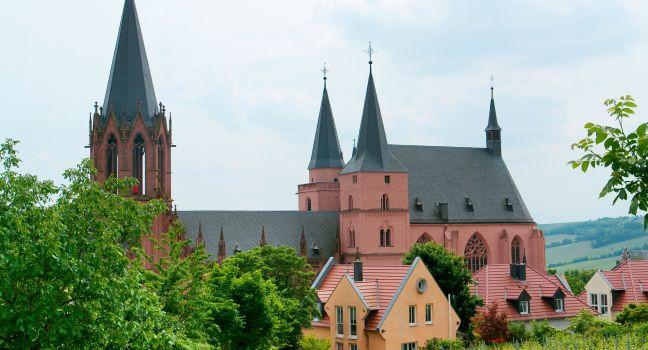Dom
This cathedral's interior is a virtual sculpture gallery of elaborate monuments and tombstones of archbishops, bishops, and canons, many of which are significant artworks in their own right. Emperor Otto II began building the oldest of the Rhineland's trio of grand Romanesque cathedrals in 975, the year in which he named Willigis archbishop and chancellor of the empire. Henry II, the last Saxon emperor of the Holy Roman Empire, was crowned here in 1002, as was his successor, Konrad II, the first Salian emperor, in 1024. In 1009, on the very day of its consecration, the cathedral burned to the ground. It was the first of seven fires the Dom has endured. Today's cathedral dates mostly from the 11th to 13th century. During the Gothic period, remodeling diluted the Romanesque identity of the original; an imposing baroque spire was added in the 18th century. Nevertheless, the building remains essentially Romanesque, and its floor plan demonstrates a clear link to the cathedrals in Speyer and Worms. Individual and group tours can be arranged through the Tourist Service Center.




